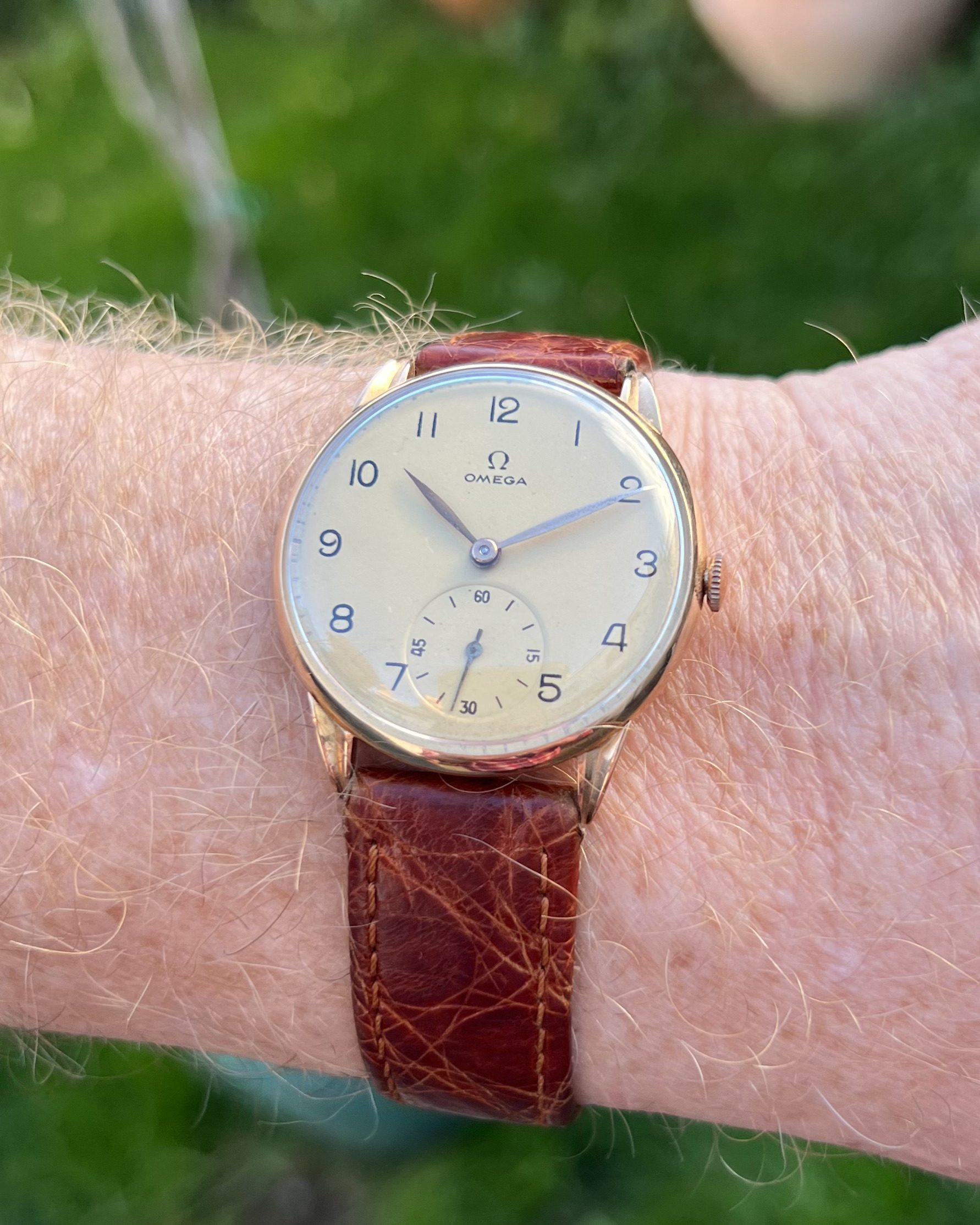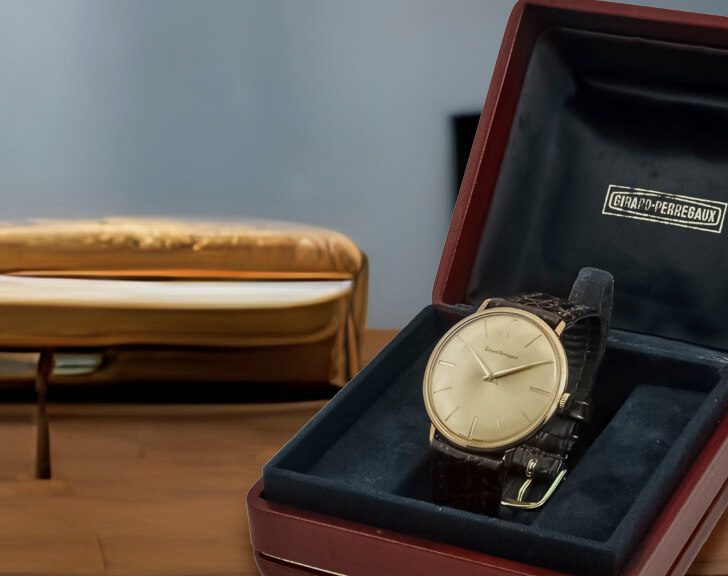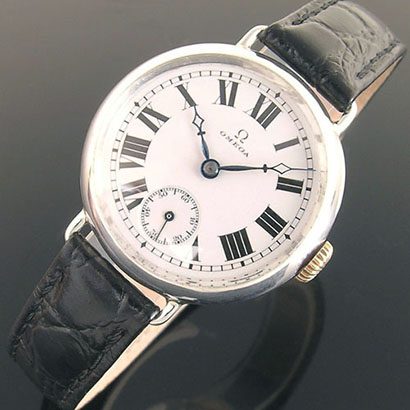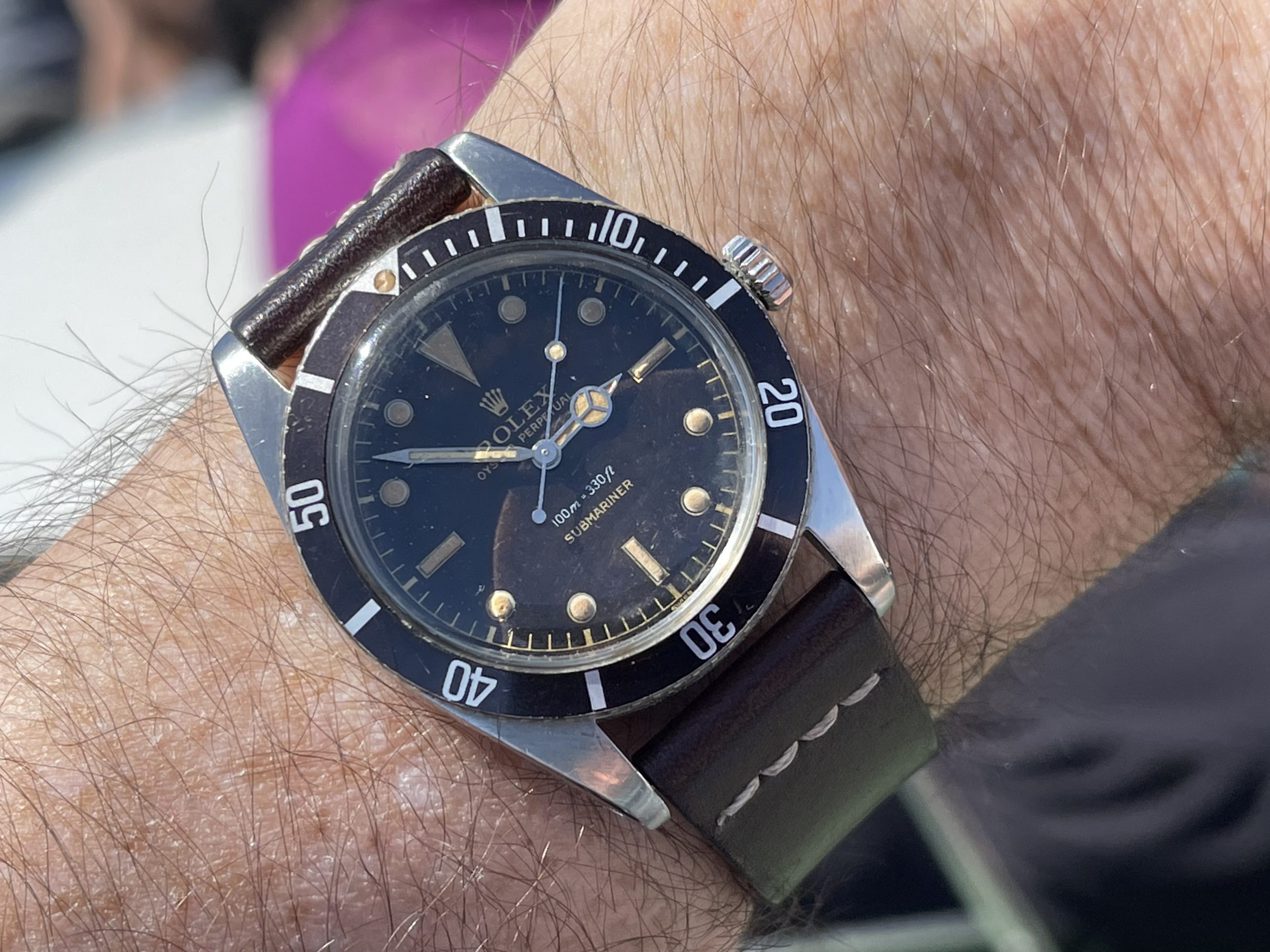HOW TO STORE
A VINTAGE WATCH
Discover the best options for how to store a vintage watch, including the pros and cons for each, from the experts at Vintage Gold Watches.
Purchasing or owning a vintage watch can be a significant financial and emotional investment. For this reason, it is essential to understand how to store a vintage watch properly. Correct storage will preserve the watch in its best condition while keeping it secure and readily accessible.
There are a wide variety of storage solutions available. How to store your vintage watch will depend on the watches you have and how often you wear them.

Protect and preserve
Vintage watches have different storage requirements from their modern counterparts. Generally, they are less robust and their cases seal less tightly. Well-maintained vintage sports watches may have their original water resistance, but all others need protection from light, humidity, and dust.
Light can cause dials to fade. In rare cases, this may create an attractive appearance that can make a watch more valuable, but usually, the fading is uneven and highly undesirable.
Watches never designed to be submerged in water or diving watches that have not been serviced can let atmospheric moisture into the case through the crown, case back, or crystal seals. While not as disastrous as total immersion, this moisture can cause corrosion to the movement parts and stain the dial over a long period.
Dust that finds its way into the watch can settle into the oiled bearings creating something between a glue and a grinding paste, neither of which is good for the watch’s health. Good watch storage should protect against impact or scratches, whether for vintage or modern ones.

Identifying your storage needs
To find the proper storage solution, you need to consider the following:
- How many watches do you have to store?
- Do you need access to them frequently?
- Are you planning on travelling with them?
- Do they need to be kept wound when not being worn?
- Do you wish to have them on display while being stored?
- How important is security to you?
Vintage watch storage solutions
Below are several options for storing a vintage watch. We will look at the pros and cons to enable you to decide what works best for you.
The Original Box
When purchased, all watches come with a box, so why not use that for storage? The box is an integral part of the original purchase package, along with the instructions and warranty document.
Original boxes are often lost at some stage of the watch’s life. Well preserved, original boxes, along with documents, can significantly increase a watch’s value if they are sold together. Storing a watch in its original box is a good idea if you have lots of secure space and do not wear it regularly. Keeping everything together prevents the box and papers from going astray.
The original box will not protect the watch from humidity. Often they are made from cardboard or leather covered wood. Indeed, some original boxes need protection themselves as their insides can disintegrate if exposed to damp conditions.
Watch boxes can be large, so even a small collection can quickly become unmanageable. If opened and closed frequently, vintage watch boxes will deteriorate, reducing the watch’s value.
Unless using a secure storage facility, it is a good idea to store watches separately from their boxes and papers so that you have more proof of ownership in the event of a theft.
Display Boxes
These solidly constructed boxes, usually made from wood or leather, can store anything from one to thirty watches at a time. The inside of the box is covered in a soft fabric that does not create dust, such as synthetic leather, felt, or velvet. Each watch sits on a soft cushion in its own compartment to prevent any damage from watches rubbing or knocking against each other. The top of the box may be solid or transparent to act as a display case for the collection. This is an example of a high-quality display box, available at Vintage Gold Watches.
Pros:
These boxes protect vintage watches well due to their robust construction. They allow easy access to watches worn regularly and accommodate an extensive collection. While they are not sealed against humidity, the use of silica gel packets under each cushion should protect against all but the most tropical atmospheric conditions.
Cons:
Being solid and heavy, these boxes are not portable and so are unsuitable for travelling with a collection. Having all your watches in one place is excellent for display purposes, but the box size would make it difficult to fit into any but the largest safe should you desire additional security.
Watch Rolls
A watch roll is a more flexible storage solution than a display box. It consists of a long strip of either canvas or leather fitted with individual pockets to hold up to ten watches. The case is then rolled up and secured with a strap to prevent the watches from moving. Here is an example of a high-quality watch roll available at Vintage Gold Watches.
Pros:
These rolls protect watches well. Even the largest are relatively portable should you need to travel with your collection. They are lightweight and can be fitted into a safe if necessary.
Cons:
While they protect watches from dust, they provide minimal protection against humidity. Being made from fabric, they can be crushed, potentially leading to damage to the watches inside. They can be unsuitable for watches with semi-stiff bracelets or straps or those using a deployant clasp as they do not like lying flat. This is not an option if you like your watches to be on display.
Travel Cases
As the name suggests, these are the perfect solution for travelling with a vintage watch. These zippered travel cases are more sturdy than a watch roll, although you must limit your travel choices to only one or two watches. Constructed in leather with a soft internal lining, these have recesses for two watches, separated by a folding panel.
Pros:
Being small and light, these cases are ideal for taking one or two watches away. Their deep recesses and rugged construction protect watches from knocks or being crushed. They will easily fit into a safe at home or your travel destination.
Cons:
Travel cases are not designed for long-term storage. They provide little protection against humidity, and the lack of visibility means that storing an extensive collection in these cases can become confusing. Similarly to watch rolls, they are only suitable for watches that lie flat.
Soft Pouches
These are the simplest forms of storage. Our soft pouches are made from suede, but you can also find them in leather or fabric. They are stitched rectangular bags accommodating a single watch. Closed with a press stud, it is vital to check that the press stud is covered inside to prevent scuffs to your watch’s case. These will protect your vintage watch from marks and scratches but little else, so it is essential to use them with another storage item, such as a drawer, cabinet, or safe.
Pros:
Small and lightweight, these keep your watches separated and scratch-free.
Cons:
Lack of transparency can make large collections confusing. They provide little protection against crushing or humidity.
Watch Winders
An automatic watch winder is a specialist form of storage for self-winding watches. The watch is kept running because it is placed on a rotating platform programmed to turn a set number of times per day in each direction according to the specification of the watch’s movement.
Please read our expert’s opinion here for an in-depth discussion of watch winders. From a storage perspective, winders are similar to display boxes in construction and the protection they offer. Such as this fine example available at Vintage Gold Watches.
Pros.
Their enclosed design keeps the watch free from both moisture and dust. A large safe can accommodate small single winders, but for a large number of automatic watches, a bespoke winding safe may be appropriate.
Cons.
Although portable winding boxes are available for travel, they are still somewhat bulky. A better solution for a short trip would be to allow the movement inherent with travel to keep the watch running.
Safes and Vaults
Throughout this guide, reference has been made to whether a box or case will fit into a safe. This is because protection is not just from accidental damage or moisture and dust ingress. Protection is also the prevention of theft.
Above a specific value, insurers may insist that watches are kept in a safe if not being worn. Several options listed above will happily fit into a safe and ensure that the watches remain scratch-free. A safe will also provide additional protection against light, dust, and moisture.
Your collection’s value, security needs, and insurance requirements will all dictate whether you can have watches on display or whether they need to be locked away. For the highest-value items, it may be necessary to use a safety-deposit vault for storage. In this case, the smaller portable options suggested here will be most appropriate to fit inside a safety-deposit vault.
There is no right or wrong way to store a vintage watch; it depends on your circumstances and how you choose to wear your collection. The only hard and fast rules are that your watches should be out of strong light and in a dry, dust-free environment.
Take a look at the range of storage options available at Vintage Gold Watches, and if you still need help, you can call or email the team for their expert advice.
To learn more about the world of vintage watch collecting sign up for our regular newsletter here.




